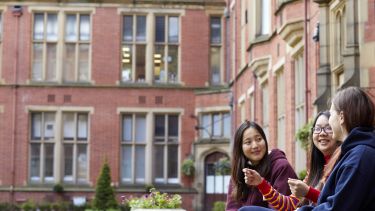I got to work with my supervisor on an interesting research project that has been published in the Astrophysical Journal

What made you decide to study at the University of Sheffield?
I knew I wanted to go to a university that offered modules in astronomy from the first year. The University of Sheffield offered a unique curriculum that integrated multiple astrophysics topics from the start, alongside core physics subjects essential for the degree. The research conducted at Sheffield is also incredibly diverse, reflecting in the wide range of modules on offer.
What did you do for your placement year?
As a Nuclear Analysis placement student at EDF (UK) I worked with various nuclear specific codes to analyse transients for future UK nuclear power station reactor fuel cycle designs. I also completed a benchmark test using code to model reactor processes, and presented results to my team.
What were the best things about your placement?
I got to experience what it was like to work in an office environment for a company that wants to help Britain achieve net zero. I was able to celebrate certain milestones with them and participate in work that made a real difference. I experienced moving away to a completely new area of the UK where I knew no one, building my confidence and independence. I was able to take trips around the country to Hinkley Point C nuclear new build, and Heysham II nuclear power station, as well as visiting Sellafield.
What have you enjoyed most about your course so far?
My course has allowed me to take part in a variety of projects. I loved my semester-long astronomy project in my third year, where I got to work with my supervisor, Dr Richard Parker, on an interesting research project that has been publishedin the Astrophysical Journal! I met with Dr. Parker once a week to discuss the theory, then went away and produced the code and models to show the viability of the theory, which is why I am the first author on the paper.
The project was a theory regarding the formation of Jupiter Mass Binary Objects (JuMBOs). These objects were recently found by the James Webb Space Telescope (JWST). Of the 540 planetary mass objects found in the Orion Nebula Cluster 9% were found in wide binaries, which was a surprising result. Dr Parker and I proposed that, if these binary planets do exist, perhaps they formed by a process called photo-erosion, a process first suggested by Whitworth and Zinnecker in 2004.
This experience has been absolutely incredible! Especially since I am looking at applying to PhDs in astrophysics. I have loved talking about my research with others, whether it be informal conversations with my physics friends, through a New York Times article, or a video conversation I had with Fraser Cain from Universe Today! It has been such a rewarding experience and has really opened my eyes to the world of research and STEM outreach!
Watch Jessica’s conversation with Fraser Cain from Universe Today on YouTube

International undergraduate scholarships
We are offering scholarships of £2,500 for each year (subject to a 60% average) of your undergraduate degree. The maximum value is £10,000 for four-year programmes.

